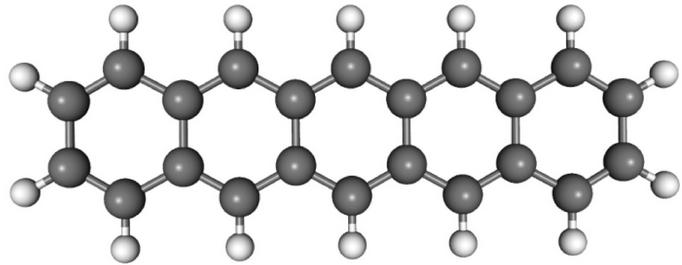The journal Science had details today of research into a special coating for photovoltaic solar cells which could potentially increase the percentage of solar energy which is converted into electricity by 6%.
Solar panels do not convert all wavelengths of light into electricity – photons of light from the blue (higher energy) end of the spectrum are converted into heat if they are not reflected from the solar panel which a) means that that solar energy is wasted, and b) means that the solar panel gets hotter, which as our article (Effect of Temperature on Solar Panels) showed, reduces efficiency.
Since the 1960’s it has been known that a material called pantacene (an organic semiconductor pictured above) has an interesting property. When a photon of light from the blue end of the spectrum hits pantacene, TWO electrons are generated. When a photon of light from the red end of the spectrum hits a normal solar cell, ONE electron is generated. Therefore by making a solar cell with a coating of pantacene, light from the whole visible spectrum can be exploited and the efficiency of the hybrid solar cell will be higher than the simple silicon solar panels currently available.
This is still very much in the prototype phase with many years of research still to come before it could become commercial. Pantacene though abundant, carbon-based, and organic, is currently expensive and technology has to be developed to enable the economical manufacture of hybrid solar panels.
